Overtraining ~ The Fitness Abyss
The information in this factsheet follows on from the previous graph-laden treatise of Intensity v Volume and Fitness v Rest. This factsheet should be particularly relevant at this point in the season (June/July/August) as it explains what can happen if you constantly chase your fitness at the expense of recovery.
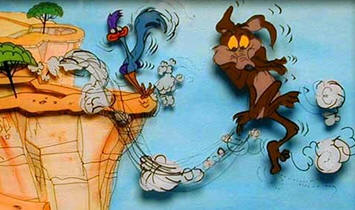
The
Disclaimer
Okay, let's get this out in the open straight away. As a confirmed
slacker, at no point in the past, present or future have I ever, or will
I ever, suffer from overtraining. Or, to give it it's posh title,
Unexplained Under Performance Syndrome.
Now, I've frequently underperformed, but never due to training too much! So, what you are about to read is a combination of anecdotal evidence, information I've picked up from athletes who've come to me, journal reviews and plain old snake oil and voodoo, with some smoke and mirrors practitioning thrown in for good measure.
Having said all that, please take note of the following content. This is serious stuff. You can wreck your whole season, and more besides, just for the sake of a little objectivity, planned rest and quality recuperation. There's no point being the fittest person on a sickbed. How sad would that be?
A Quick Recap
Anyway, here we go! Last time we looked
at the correlation between fitness and freshness. It was reflected
in the magical medium of graphs. Graphs are good, graphs can be
used to reinforce perceptions, forewarn peaks and troughs or something
to bore the rest of the family with. Here's where we left off last
time...
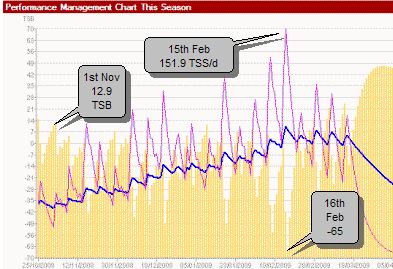
You can see after a very
steady September and October I was as fresh as a daisy on the 1st
November with a Training Stress Balance of 12.9
and a Chronic Training Load of 33
. So I was very fresh, very untrained and at 72 kilos, carrying a little
"pre-winter, winter weight". I was, in the words of Valentino Rossi, "verrry 'appy".
Come February, I was considerably less fresh, with a Training Stress Balance of -65 (yes that's a minus sign!) but had driven my Chronic Training Load to 87.9; an all time high! I struggled to keep my weight up to 72 kilos, as I didn't want to be too lean too soon but also didn't want to have to be losing weight too quickly come the season start.
As all the best financial analysts do, I could have predicted the continuation of the graph to finish the year with a CTL of 200 and a TSB of -100. How good would that be? Not very is the answer. At some point along that projected path would be disaster; a fitness cliff edge from which there is only one direction, down.
Stay Away From The Edge...
Our job as athletes is to get
as close to our cliff edge as we can, without going over it. We
need to be a Road Runner, not a Coyote. Most people don't know
where their edge is until they've gone over it. For some, it's too
late and at best a season is lost.
To be honest, most of us (through general fatigue) will be forced to stop at some point at or near the edge; just in time to grab that hanging branch of recovery. But you have to realize you're near the edge and you have to reach for the branch. Failure to do either, again, will result in a lost season.
It takes a very, very motivated and obsessively driven athlete to go in to full blown overtraining. Most non-professionals suffer from what I term "extended-overreaching". It's still not good, but it is fixable a damn sight easier than its bigger, uglier, half-brother, overtraining.
Balance is Key
Improving as an athlete, to realize your true potential, is
undertaken by finding the constantly moving "adaptation
balance point" between training and recovery.
 Train
too little, or conversely recover too much, and you will always
underperform to your potential due to a lack of fitness.
Train
too little, or conversely recover too much, and you will always
underperform to your potential due to a lack of fitness.
Train too hard, or fail to adequately recover, and you will always under perform to your potential due to a lack of freshness.
As we said last time, find the fitness/freshness balance point through correct levels of training/recovery and you find your form; and form (with a degree of tactical acumen) wins races.
The clever people recognise the signs and remain in balance. This factsheet will help you identify your limit by pointing out the signs and signals your body sends to you to protect you from overtraining. All you have to do is recognise them, then act on the information they're sending you.
Adaptation
Balance Point
The harder you train, the fitter you get, the harder it is to get more fitter.
Not a classically structured sentence
in an Oscar Wilde sense I grant you,
but stick with it and I'll explain...
Say it's November and you do a twenty minute interval at 230 watts and get an average heart rate of 195 bpm. Then, after a day's recovery you do it again; your heart rate is now 193 bpm.
Carry on repeating for a couple of months and come January (apart from being bored stupid) your heart rate is now 165 bpm. You've become very good at 230w, 20 minute intervals. So good in fact that it's no longer challenging or developing you as an athlete. In fact, it's probably now classed as a recovery ride! That, dear readers, is adaptation.
At some preceding point (which is a lot, lot sooner than you think) you should have increased the power or effort duration to advance your adaptation point. As you'll recall from previous factsheets, athletic development is achieved through manipulating the Frequency, Intensity or Time of a given exercise.
As the weeks pass, the adaptation and development gained from carrying out this exercise will diminish. If you added 10 watts every third week to the session, your fitness would have risen significantly, along with the training stress, but not necessarily the fatigue.
At some point your fitness gains will reach a plateau. At some point you will reach a level of fitness beyond which the returns on effort diminish significantly or disappear completely. Realize this and move on. Don't keep doing the same things and expect different results. It's the first sign of madness.
Absolutely, positively, definitely the best way to find your adaptation point is to carry out a Performance Evaluation Test. The results from the test will validate your previous block of training and set the training levels for your next. Never underestimate the value of a test and always regularly place one in your training plan.
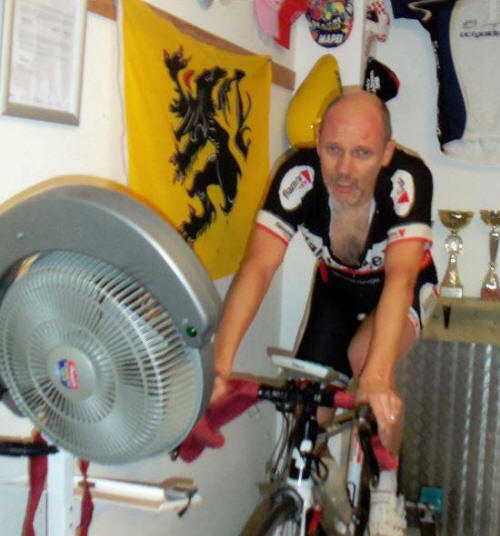
Over-reached, not over-trained
Jason Stratford ~ 2015 Island Vet RR and
5 mile TT Champion
Overreaching
Overreaching is a fantastic feeling. When you get back from your first five hour ride of the year and have
that warm glow of happy tiredness about you, you know it's all coming
together.
You were slightly tired before you set out, but you knew you'd prepared well and you knew you had it within you to achieve your goal for the day.
Having objectively reviewed your plan, you knew that once you'd dusted this puppy you'd have a recovery week. During that recovery week you'd perhaps have that Indian meal you'd promised yourself as a reward for eating well and working hard in the previous three weeks.
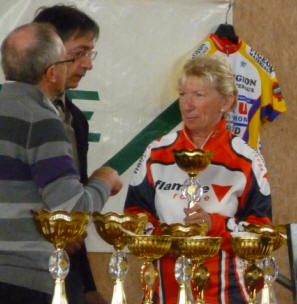 At the back end of the
recovery week you'd have taken a performance evaluation test and
validated your training gains and set new benchmarks for your next
training block.
At the back end of the
recovery week you'd have taken a performance evaluation test and
validated your training gains and set new benchmarks for your next
training block.
Physically and psychologically you're now ready to bounce back and take on more intense sessions. You knew all this because you'd prepared a structured training plan that had built in overreaching and in built recovery to allow maximum, controlled, sustainable adaptation to take place.
Our body can cope with this gently rising level of training stress and fatigue for quite some time. Keep it up and you are well on your way to winning a nice shiny trophy, like the one above!
Overtraining
Overtraining is a horrible, lost, empty
feeling. When you get back from your first five hour ride of the
year and have that battered, cold desolation of extreme exhaustion about
you, you begin to think it's all falling apart.
You were very tired before you set out, having not slept well the night before. You knew you'd prepared as hard as physically possible. You even threw in a few last-minute extra sessions because you thought you'd underestimated your requirements so tried to "top-up" your fitness levels. You did this because you didn't think you had it within you to achieve your goal for the day.
Having subjectively reviewed your plan, you knew that once you'd dusted this puppy you'd have to skip your recovery week because your training can't be working if you're this slow. Your world is beginning to fall apart and the only way to get back on track is to train harder and skip a few rest days.
You know all this because your structured training plan now has more red ink and scribbles on it than one of my old school reports. Fear of failure is driving you towards the cliff edge. Training is becoming a chore to endure and life is pretty bloody miserable. And what's worse, you've had a cold for the last three weeks!
 Our
body cannot, and will not, cope with this inflated level of training
stress and fatigue. You are about to become very ill indeed and
become the recipient of this hard earned but totally undeserved badge of
dishonour.
Our
body cannot, and will not, cope with this inflated level of training
stress and fatigue. You are about to become very ill indeed and
become the recipient of this hard earned but totally undeserved badge of
dishonour.
Except, there's nothing dishonourable about it. You just failed to recognise the signals and continued to push on with commendable, but misguided verve. No one can knock your commitment, intelligence maybe, but commitment never.
It was so easy to prevent this situation arising. If only you knew what to look out for.
Diminishing Returns
We're all different and we're all different at different
times. Training hard gives you the capacity to train hard. But training harder and harder and harder will, without adequate rest
and recovery time, lead to some or all of the following:
▼ Exhaustion, rather than fatiguePsychological Symptoms:
▼ Inability to sleep
▼ Reduced sustainable power outputs
▼ Increased resting heart rate
▼ Reduced maximum heart rate
▼ Niggling injuries or cuts that won't heal
▼ Catching or not getting rid of colds
▼ Irritability
▼ Not looking forward to training
▼ Lack of concentration
▼ Tactical confusion in race situations
▼ Abandoning a race or training session
▼ Then getting really angry/sad about it
▼ Loss of focus on the goal
▼ Easily psyched-out by opposition
▼ Negative internal voice
This is a by no means, excuse the pun, exhaustive list. If you notice any of the above, you need to consult your training diary (or better still, get someone else to look at it for you) to see if you are either training too hard, or not recovering fully.
DO NOT ignore the subliminal and sometimes explicit messages your body is sending you. No one ever lost a race through taking a rest day!
Prevention rather than cure
It's far better to surf the wave of training adaptation than
crash and burn in the white water of overtraining. So how can you
tell where your break point is?
 With
a power meter, and Training Peaks, it's easy. All you need to do
is monitor your reaction to your training stress. Without a power
meter, you just need to be more diligent in keeping your training
records up to date. You need to record the quantity and quality of
your training and make a note of how you feel before, during and after
your training sessions.
With
a power meter, and Training Peaks, it's easy. All you need to do
is monitor your reaction to your training stress. Without a power
meter, you just need to be more diligent in keeping your training
records up to date. You need to record the quantity and quality of
your training and make a note of how you feel before, during and after
your training sessions.
Analyse & Consult
It may seem a little anal,
and over-the-top but the better you become as an athlete, and the closer
you get to your goal, the more these attentions to detail matter. It really is that important.
What have you got to lose by trying
it for a month or two?
There are many ways to monitor your training some, in my opinion, are better than others. Here I'll try to give the pros and cons of each method.
Miles or Kilometres
Some riders break their training down in to distance over a
given period. A week, a month or a specific training block. It's was probably all we did in the 80's because that's all we
had.
I remember each January, Cycling Weekly used to print a centre page pull out of graph paper so we could plot out mileage and impress our friends!
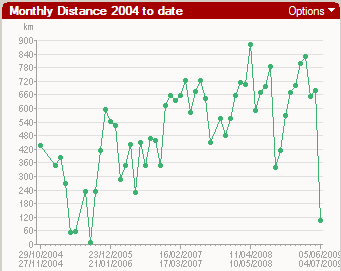
It was the first question you asked when you met another rider. How many miles have you done? Some didn't do interval training until they had a 1000 miles in their legs. Mileage is a start, but it gives no indication to the effort or intensity expended to cover the distance measured.
Time
Some riders break their training in to hours. This was a
favourite of coaches in the late 80's early 90's. If you can train
for 10 hours a week, that's 500 hours a year. You then measure your effort and recovery cycles on
time and periods of time.

Again, time suffers the same issues as distance. Without a quantifier of effort it's difficult to measure the quality of the time trained and the fatigue caused by that time spent riding. Ten hours of club runs give a far different training stress than ten hours of 60 second killer intervals.
 Rating Perceived Effort
Rating Perceived Effort
This was the scale that pre-dated heart monitors. Borg
identified two scales; a 1 to 10 and a 6 to 20.
The lower number was easy the higher number very, very hard. The 6-20 numbers were supposed to relate to perceived heart rate activity divided by 10.
You can still use it, but often when at the end of a training block or on a bad day, you'd be more inclined to over-rate the effort you were putting out.
For inexperienced athletes, it's very easy to under train using this system.
Heart Rate
My three brothers believe that you are "allocated" so many heart beats
to last your entire life. When you've used them all up, you go off
to a better place. They don't train, they don't run, they don't do
anything that may burn up heartbeats at a faster rate than they have to. Even though I'm the oldest, I expect to outlast them all!

However, heart rate was the way to go before power meters arrived, and they still offer a 8semi-viable proposition. Although obviously you need to monitor time spent in your heart zones for this to be of any use. But at least we now have a quantifier against which to measure our effort.
You'd be mightily surprised of how many people I see with heart monitors that don't know their resting, or maximum heart rate!
Also, when you're tired you may have problems getting your heart rate up to previous highs. Some people see this as a problem (for the wrong reasons) and train harder to get their heart in the "right" zone. The spectre of overtraining is just around the corner...
Power Meters
By now you all know my thoughts on using a power meter. The power meter itself won't make you a better rider, but using the
information it provides will. Training Stress is the tool that allows
you to identify the quality and quantity of your training, against your
current level of fitness.
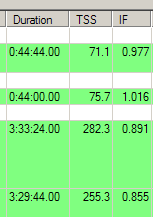 Monitoring Training Stress
Monitoring Training Stress
With
a power meter, as
you saw from the previous sheets, you have the
capacity to record and understand the Training Stress Score (TSS) placed on your body.
Using these tools, it's possible to record the cumulative stresses over a period of time. Each session, as can be seen on the right, gives a TSS score which is based on your current level of fitness. 250 watts for 45 minutes in November gives a much higher training stress than it does in the middle of July.
We can plot this information on a graph with training peaks.

Time to back off
From experience I know when
I'm getting to my point of diminishing returns. At the end of a
steadily increasing three month block of three weeks on, one week off, I
start to get "the signs". Just like graphs, sign's are good.
But only if you take notice of them.
It starts with a dizziness if I stand up too quick. As sad as I am, I see this as a good sign. If I continue training hard for a further week, I get mouth ulcers and if I still don't back off, a week later I'll get a cold sore. Nice!
It's my aim, to get all of these symptoms at the back end of February, just before the season starts. It's then my aim, to make sure I don't get them again until June when I begin to peak for my main objectives.
The more of the above signs I get, the closer I'm getting to the edge of my personal sustainable training effort cliff.
As I write this, three weeks before my 24 hours of Ventoux, and two days after having my backside kicked all around Brittany by Bernard Hinault I have that tingle on the top lip that means just one thing. It's nearly time to back off...
But the beauty of measuring and constantly monitoring my TSS is that I already knew that.
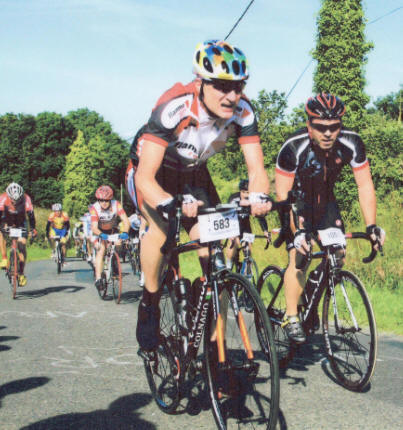
Suffering, for the overloading cause, on the Hinault
The
Numbers Game
Now we come back to our graphs. If you remember, I
pushed myself to an all time high for the middle of February. Here's what happened from February to June.
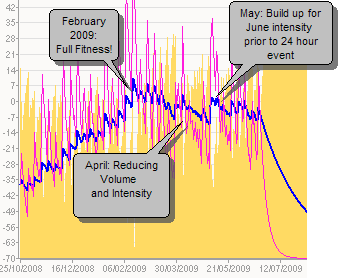
You can see that even though the competitive season started in April, I've slacked right off. In the intervening period between events, I recover and throttle back on both intensity and duration. The high pink spikes are events; the yellow lines indicate levels of freshness; and the blue line is current fitness.
I let the fitness bleed away because I knew I would be unable to sustain such an intensity in the early season. I need to be fit for Ventoux and possibly the Le Mans 24 Hours in August. So I need to have fitness room in which to move. And I'm safe in the knowledge that my fitness is already in the bank and I can push to a monthly TSS of 2600 without cracking.
Scores on
the Doors
Here's a years worth of numbers to peruse to give you a sense of how to
manipulate training to give the TSS (Training Stress Scores) you desire. It also shows the "flow" of a training year as the season moves from:
▼ September & October ~ Recovery;
▼ November to January ~ Winter build;
▼ February & March ~ Pre-Competition;
▼ April & May ~ Early Competition
▼ June to August ~ Competition
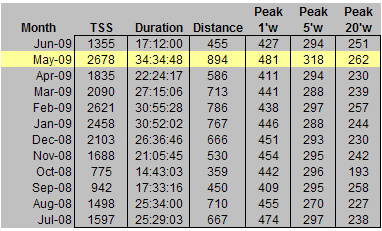
I've highlighted May to show
how, after the back off in April I spoke about in the graph immediately
above, I came back with PB's in one, five and twenty minute power
outputs. Despite riding in May the equivalent of twenty-six and
three-quarter 25 mile TT's.
It also shows I'm heading in the right direction for June/July/August when the big events take place. I'm still fit and still fresh despite peeking over the edge of the cliff for a little look-see in February.
Look deeper in to the numbers. So far this June (18 days recorded)I've covered 455 kms in 17 hours and 12 minutes. In September I did 450 kms in 17 hours 33 minutes; very, very close on both counts.
But look at the Training Stress Score, 1355 against 942; a 30% increase in intensity and stress loading. As we said earlier, time and distance do not give the full story. June, as was May, has been a full-on month.
Recovering
Recovery from overreaching is really quite simple. Throttle back for a week at least and preferably two.
No races, no
heavy training just a one hour recovery ride every other day and maybe a
two hour one at weekends. Even try a total week off the bike. It won't kill you, honest.
Recovery from overtraining is way beyond the scope of this factsheet and this website. It may need medical treatment and quite possibly counselling from a coach or a sports psychologist. Overtraining is often a manifestation of other issues.
As we said, we're more likely to be suffering from "extended overreaching". Plan your training, extend yourself each week for three weeks, take a dip; then repeat. It really is that simple.
The
Message
Sorry for such a long factsheet but this is
important stuff. Here's a synopsis of what you need.
Your mission as an athlete is to find your balance between Training Stress to progress, and Recovery to allow adaptation and (when used with a progressive pre-competition taper) super-compensation to take place.
Objectively monitor your training to give you the information you need to progressively structure your sessions in a way that will keep you fresh, motivated and progressing. Above all, keep it fun.
Whichever way you do it, measure your training with a consistent methodology. If you think all this is too much faffing, then you'll probably get beaten by a less capable athlete who has prepared better. It's an old cliché but it's true; train smarter not harder.
Many amateur racers spend a great deal of their season in a permanent state of "extended over reaching". They don't (because they don't have the physical capacity or constitution) get in to full blown overtraining but they often constantly under perform because they're nearly always under recovered. Plan your recovery as carefully as you plan your efforts. The rewards will come.
Don't just train to, or by, numbers. Pay attention to what your body is telling you. All the clues are there to help you. It can start with bright yellow urine (dehydration) and end with a super depressed immune system, with no salt and vinegar on your chips because the inside of your mouth is like a character from Hellraiser.
Don't overtrain, overreach, then taper and overachieve! There you are; a race winning formula in one sentence. This coaching lark's easy!!
Until next time...








